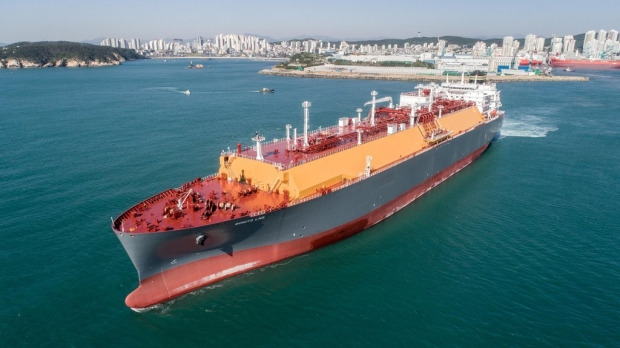Shipbuilding
Passing China, S.Korean shipbuilders hold top spot for three months
Profitability will largely depend on stabilizing costs, including steel plate prices
By Aug 12, 2021 (Gmt+09:00)
3
Min read
Most Read
LG Chem to sell water filter business to Glenwood PE for $692 million


Kyobo Life poised to buy Japan’s SBI Group-owned savings bank


KT&G eyes overseas M&A after rejecting activist fund's offer


StockX in merger talks with Naver’s online reseller Kream


Mirae Asset to be named Korea Post’s core real estate fund operator



South Korea’s shipbuilding industry has maintained the top position worldwide in new orders for three straight months up to July.
According to global shipbuilding and maritime market research firm Clarksons Research, South Korea grabbed the biggest share of global new shipbuilding orders in July with 45%, or 1.81 million compensated gross tons (CGTs) out of 4.01 million.
China followed closely with 1.77 million CGTs in July, or 44% of the market. Japan was far behind the two countries with 0.4 million CGTs, or 10% of the orders.
Analysts highlighted that South Korea could maintain its leadership largely due to its strong performance in liquefied natural gas (LNG) carriers and very large crude carriers (VLCCs). The country won all 16 out of 16 new LNG carrier orders placed globally in the first half of this year, and also landed 27 out of 31 new VLCC orders during the same period.
Performances remained strong into the second half, with Korea Shipbuilding & Offshore Engineering winning 16 new shipbuilding orders in July, including 14 LNG carriers, valued at more than 4 trillion won ($3.5 billion). Another South Korean shipbuilder Samsung Heavy Industries also secured four new orders of LNG carriers in the given month.
South Korea’s new orders this year from January to July amounted to 12.76 million CGTs, the highest level since the industry-wide boom in 2008 when it won 15.5 million CGTs in the first seven months, grabbing 43% of the market. However, the figure is still behind China, which won 13.48 million CGTs of orders this year up to July, taking 45% of the market.
HIGHER NEWBUILDING PRICES TO FUEL STRONGER H2 PERFORMANCE
The shipbuilding industry is also enjoying higher newbuilding prices, which have been rising constantly over the last nine months. The price indicator Clarksons Newbuilding Price Index reached 144.5 points in the first week of August, surpassing 140 points for the first time since September 2011. The index reached its historical high at 191.5 points in August 2008 and has been rebounding from its lowest point at 121.4 points in March 2017.
The higher prices will lower the cost burden of South Korea’s three major shipbuilders, which reported a combined operating loss of more than 2 trillion won ($1.7 billion) in the first half. The losses were largely due to the higher price of steel plates used for shipbuilding.
Steel plates, which were traded at around 600,000 won ($517.77) per ton last year, have been trading at more than 700,000 won ($604.07) in the first half due to rising iron ore prices. The market price was previously expected to reach 1 million won ($862.95) in the second half, a cost which was reflected in advance on the companies’ financial statements for the second quarter.
But now with the Chinese government advising its steelmakers to reduce production, the demand for, as well as the price of, iron ore has dropped. The price of iron ore in the global market, which reached $226.46 per ton in May, has dropped by 21% to $179.37 as of Aug. 6.
Market watchers expect that such a drop in iron ore prices will put shipbuilders in a stronger position in negotiations with the steelmakers regarding steel plate procurement.
“South Korean shipbuilders will continue to have an upper hand over other countries in high-value vessels such as LNG carriers and VLCCs. But in order to improve profitability, their manufacturing costs, including steel plate prices, need to be stabilized first,” said a shipbuilding industry official.
Write to Jung-hwan Hwang at jung@hankyung.com
Daniel Cho edited this article.
More to Read
-
 Shipping & ShipbuildingKorea’s big 3 shipbuilders aim to hike newbuilding prices
Shipping & ShipbuildingKorea’s big 3 shipbuilders aim to hike newbuilding pricesAug 02, 2021 (Gmt+09:00)
3 Min read
Comment 0
LOG IN


